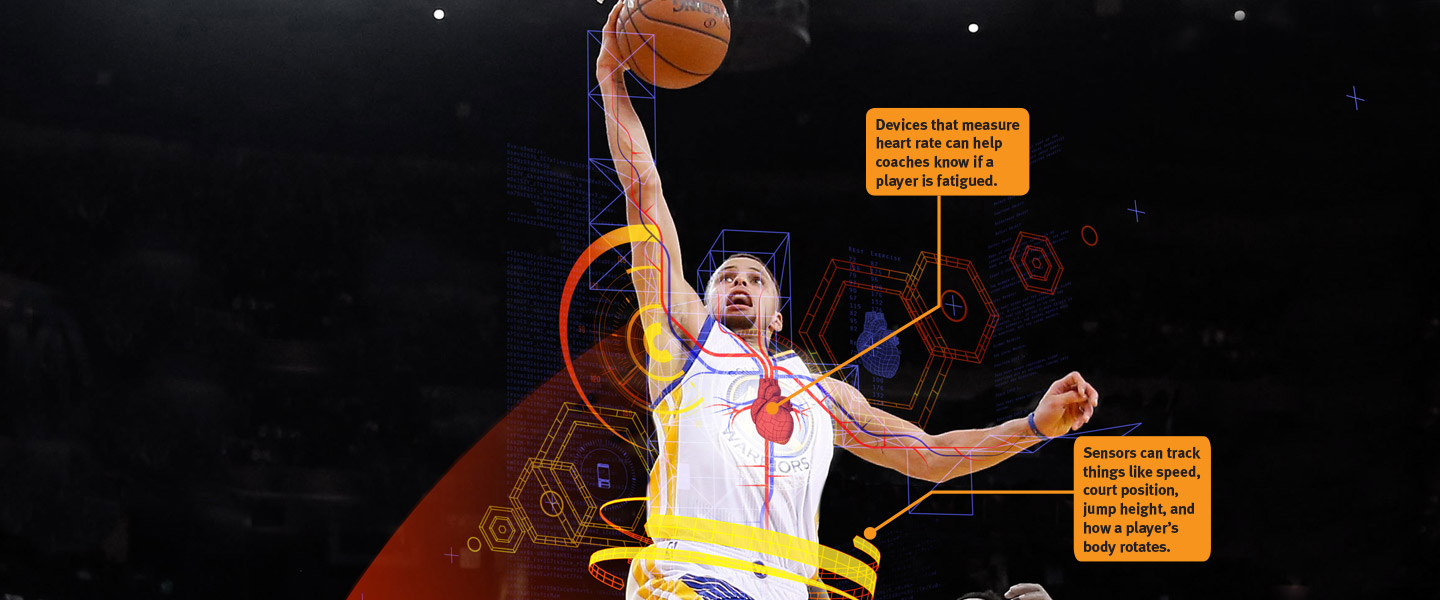Stephen Curry of California’s Golden State Warriors dribbles the basketball down the court. At the three-point line, he stops. In one motion, he jumps and shoots. The ball rolls off his fingers and arcs through the air. SWOOSH!
Last season, Curry made 402 three-point shots. That’s more in a season than any player in NBA history. He also led the league in points per game.
Basketball teams have long kept track of statistics like these to measure a player’s performance. But now, teams can track much more about athletes like Curry. High-tech tools measure everything from a player’s heart rate to the angle of a shot. Coaches use this information to fine-tune their players’ technique and monitor their health. It might even help a team win.
Stephen Curry plays basketball for the Golden State Warriors in California. He’s about to make a three-point shot. In one motion, he jumps and shoots. The ball rolls off his fingers. It flies through the air. SWOOSH! It’s in.
Curry made 402 three-point shots last season. That’s an NBA record. He also scored the most points per game that year.
Basketball teams count players’ points to see how well they’re playing. Coaches have kept track of this data for a long time. But now they can track more about players like Curry.
Many teams are using new high-tech tracking tools. These tools measure things like a player’s heartbeat or the angle of a shot. Coaches collect this information. They can use it to help players improve. It might even help a team win.

